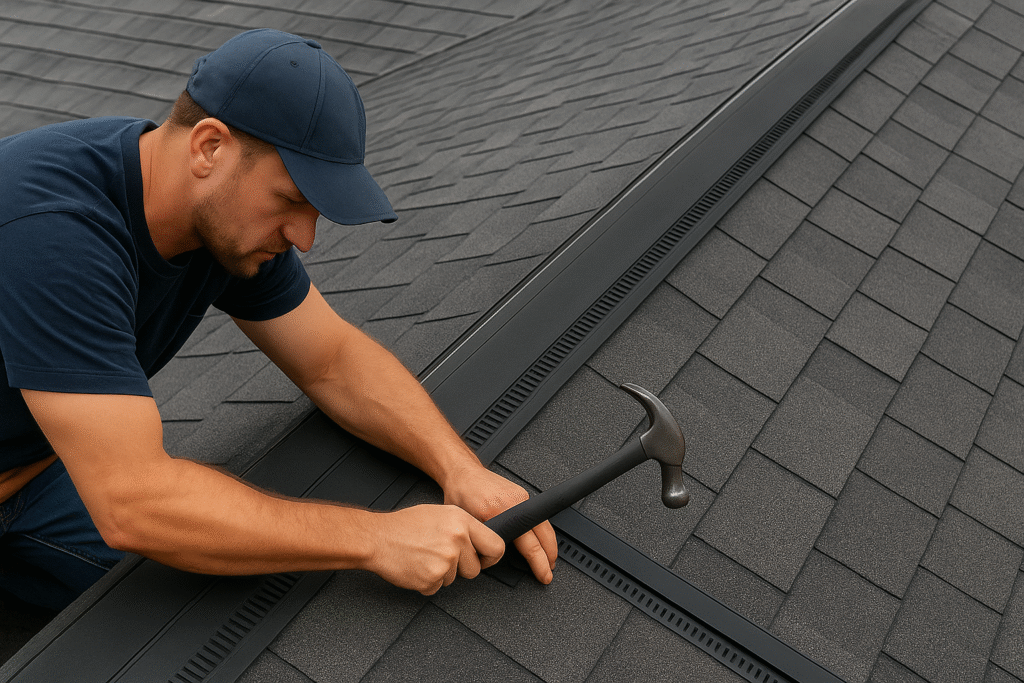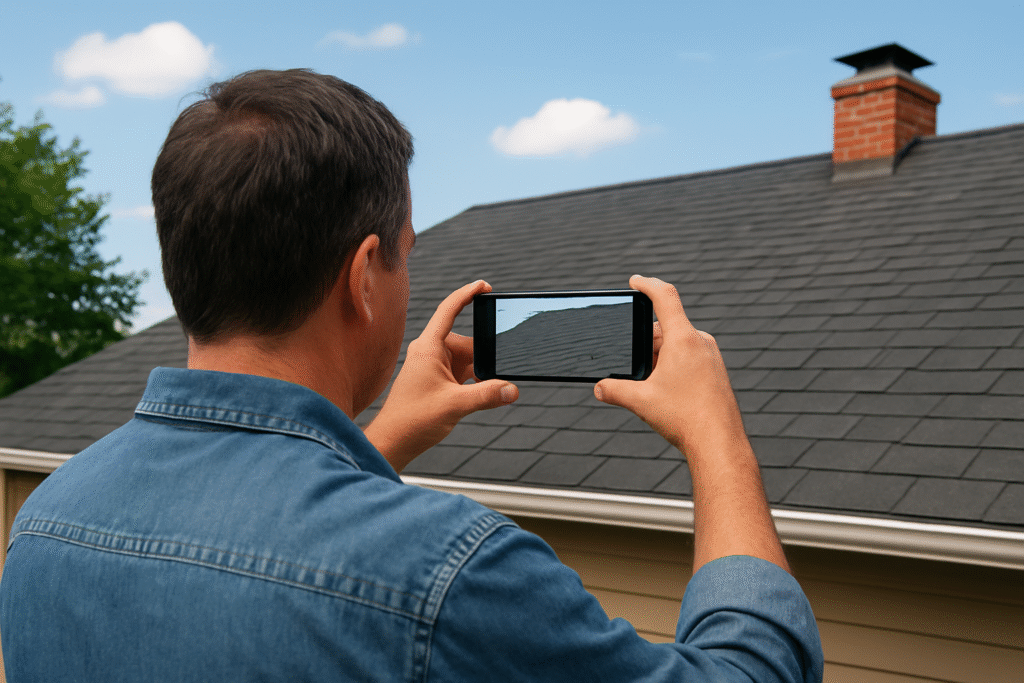Understanding Roof Blistering in Florida’s Heat
Insurance
Roof Repairs
Roofing
November 7,2025

After a hot South Florida day, you might notice raised bubbles on your roof shingles. These are called blisters, and they are a common sight in our intense climate. At FoxHaven Roofing, we want to help you understand what causes them and when you should be concerned.
Understanding roof blistering allows you to protect your home and make informed decisions about repairs.
What Is Roof Blistering?
Roof blistering occurs when air or moisture gets trapped between the layers of your shingles. When the Florida sun heats your roof to temperatures between 150-190 degrees, this trapped air or moisture expands and creates a bubble.
While small, unpopped blisters may seem like a minor cosmetic issue, they can weaken your shingles over time. If a blister pops, it exposes your roof’s protective underlayment to rain, wind, and UV rays. This can quickly lead to leaks and water damage inside your home.
Key Takeaway: A popped blister is an open door for water. It exposes your roof’s underlayment, creating a direct path for leaks and potential water damage inside your home.
What Causes Roofs to Blister in Florida?
Your roof faces some of the toughest conditions in the country. Several factors contribute to blistering, often working in combination. Poor attic ventilation is the most common culprit. When your attic cannot release hot air, it builds up under your shingles. This trapped heat, combined with direct sun, creates the perfect environment for blisters to form.
FoxHaven Insight: Poor attic ventilation is the #1 cause of roof blistering we see in South Florida. Trapped attic heat essentially “cooks” your shingles from below, accelerating damage.
Manufacturing defects and improper installation can also create vulnerabilities. Moisture can sometimes be trapped inside shingles during production. Similarly, if an installer doesn’t use the correct techniques or adhesives, air pockets can form between shingle layers. In either case, intense heat causes these pockets to expand into blisters.
Can Roof Blistering Be Prevented?

Yes, prevention is always more effective than repair. The best way to prevent blistering starts with a quality installation. Choosing higher-grade shingles from a reputable manufacturer reduces the risk of defects. It is equally important to work with a licensed, experienced installer who follows manufacturer specifications to prevent trapped air and moisture from the start.
Proper attic ventilation is also essential for your roof’s longevity in Florida. A system with adequate intake and exhaust vents allows hot air to escape, preventing the heat buildup that leads to blistering. Regular maintenance, such as scheduling annual professional inspections and keeping your roof clear of debris, helps you catch small issues before they become expensive problems.
How Can I Help Keep My Roof Cool?
While you can’t control the weather, you can take steps to help your roof handle the heat. Planting tall, strategic shade trees can reduce direct sun exposure, but be sure to keep branches trimmed to avoid shingle damage. Keeping your roof clear of leaves and debris also helps, as it prevents trapped moisture and allows for better air circulation.
You can also improve your roof system itself. Lighter-colored shingles naturally stay cooler by reflecting sunlight, a factor many homeowners overlook. For extra protection, reflective coatings can be applied to bounce solar rays away from the roof surface, significantly reducing temperatures during peak summer months. However, the single most effective step is ensuring your attic has proper ventilation with ridge and soffit vents, which prevent the heat buildup that causes most blistering.
Does Insurance Cover Roof Blistering?

This is a common question, and the answer is usually no. Most homeowners insurance policies view blistering as a maintenance or wear-and-tear issue, which is not covered. Scenarios involving manufacturing defects or improper installation are also typically excluded, as they are considered the responsibility of the homeowner or manufacturer.
However, coverage might apply if a blister pops and leads to a leak that causes interior water damage. In that case, your policy may cover the repairs inside your home, but not the roof repair itself. If you have both hail damage and blistering, an adjuster might argue the damage is from blistering, not the storm.
Pro Tip: Document your roof’s condition with photos each year before hurricane season. This creates a clear record that can help differentiate new storm damage from pre-existing issues like blistering during an insurance claim.
When Should I Worry About Roof Blisters?
Knowing when to act can save you from costly repairs down the road. Small, unpopped blisters are primarily a cosmetic concern and don’t require an emergency repair, but they should be monitored as they weaken shingles over time.
Popped blisters, however, need prompt attention. An open blister is a direct entry point for water and can lead to leaks. If you see widespread blistering across many areas of your roof, it often signals a larger underlying problem like poor ventilation that affects the entire system. In this case, a professional inspection is needed to identify the root cause.
What Does It Cost to Fix Roof Blistering?
Repair costs depend on the extent of the damage. For a single popped blister, most homeowners pay between $100 and $1,000, with an average around $550. The final cost depends on your roof’s pitch, accessibility, and the number of shingles involved.
If poor ventilation is the cause, addressing that issue is crucial to prevent the problem from returning. When blistering is widespread, a full roof replacement often makes more financial sense than continuous repairs. A new roof gives you a fresh start with quality materials, correct installation, and proper ventilation.
What Should I Do If I See Blisters on My Roof?
Finding blisters on your roof doesn’t have to be stressful. First, document what you see by taking clear photos from the ground. Note when you first noticed them, as this can be helpful for tracking the issue.
Next, resist the urge to pop the blisters yourself. Doing so can cause more damage and may even void your shingle warranty.
Important: Never pop a roof blister yourself. Puncturing a shingle can void its warranty and immediately exposes your roof to potential water intrusion. Always leave this to a professional.
The most important step is to get a professional inspection. An experienced roofer can assess the damage, identify the cause, and evaluate your attic’s ventilation system. This will give you a clear understanding of the problem and the best path forward.
Your Partner in Protecting Your Home
Roof blistering is a manageable challenge in South Florida. It’s typically caused by a combination of intense heat, trapped moisture, and poor ventilation. By focusing on prevention through quality installation, proper ventilation, and regular maintenance, you can protect your roof for years to come.
If you’ve spotted blisters on your roof, getting a professional assessment is the best way to get clarity. At FoxHaven Roofing, we understand the unique challenges your roof faces. We’ll inspect it thoroughly, explain what we find in plain language, and help you determine the right solution—whether it’s a simple repair or a long-term fix. Get in touch today for your free, honest roof assessment.
